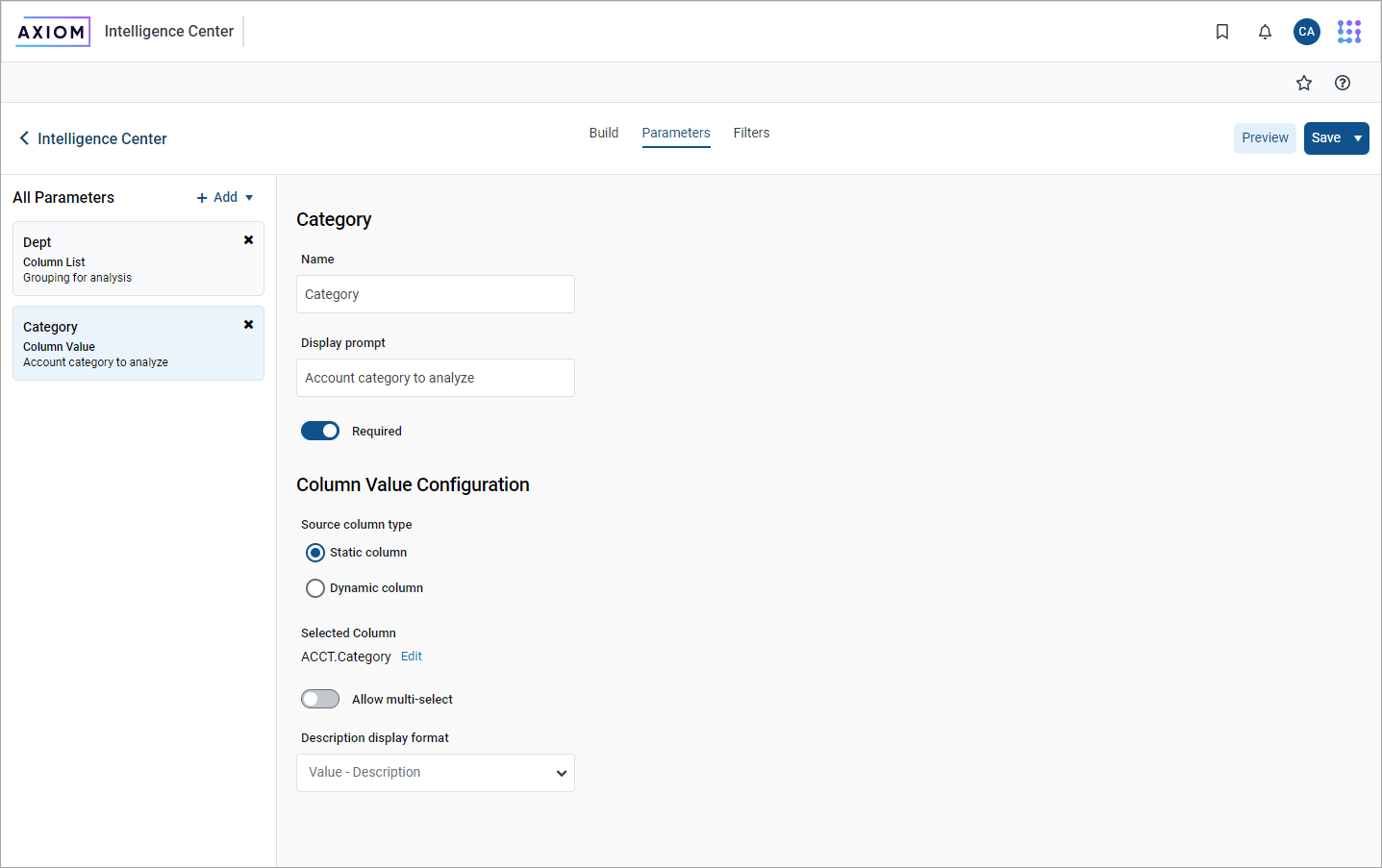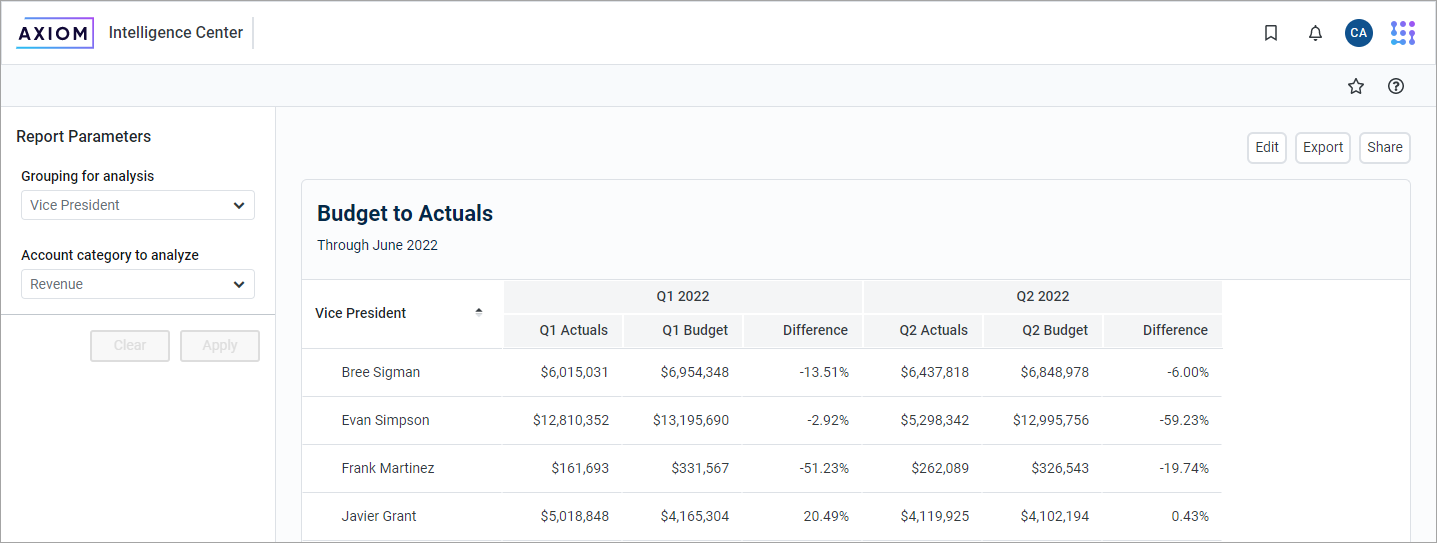AX1687
Using report parameters, you can enable end users to dynamically change the data showing in the report. The advantages of using report parameters include:
-
You can more efficiently cover your reporting needs using fewer reports, which means less time needed to develop and maintain reports.
-
Report users are more in control over the data they want to see in the report.
What can report parameters impact in the report?
Report parameters can be used to dynamically impact the following items in the report:
-
The row dimensions used in the report can change dynamically by using Column List report parameters. For example, the user can dynamically change the row dimension to show data by different groupings such as department, account, region, entity, and so on.
-
The data in the report can be dynamically filtered by using Column Value report parameters. For example, the user can select one or more values in a column—such as departments, accounts, or entities—and the report is dynamically filtered to show only the data for the selected values.
Reports can use either or both types of parameters as needed to provide the desired level of interactivity.
How are report parameters defined?
Report parameters are defined in the Report Builder using the Parameters tab. Using this tab, you can create, configure, and delete parameters as needed. When configuring parameters, you define properties such as:
- The type of parameter, Column List or Column Value
- The name of the parameter and the display text to use when presenting parameters to report users
- Whether the parameter is optional or required—if required, then the report does not display data until the user makes a selection
- For Column List parameters, the list of table columns to associate with the parameter, and an optional default column selection
- For Column Value parameters, the column to associate with the parameter:
- You can select a specific column or you can tie the Column Value parameter to a Column List parameter, so that Column Value parameter dynamically uses the selected column
- You can specify whether users can select a single value in the column or multiple values

Example Parameters tab to define report parameters in the Report Builder
How do users interact with report parameters?
When users view a report with report parameters, the parameters display in a panel along the left-hand side of the report. Users can make selections and apply them to dynamically refresh the report with data that meets their selections. If a parameter is required, then the user must interact with the report parameter panel before the report shows any data.

Example web report using report parameters
